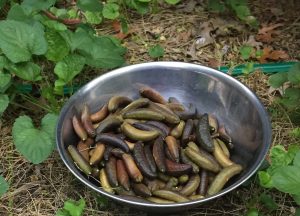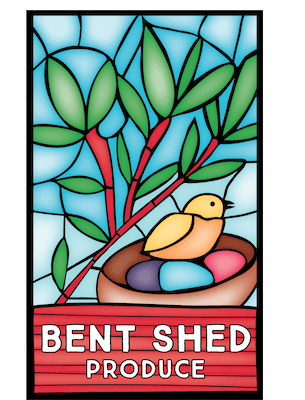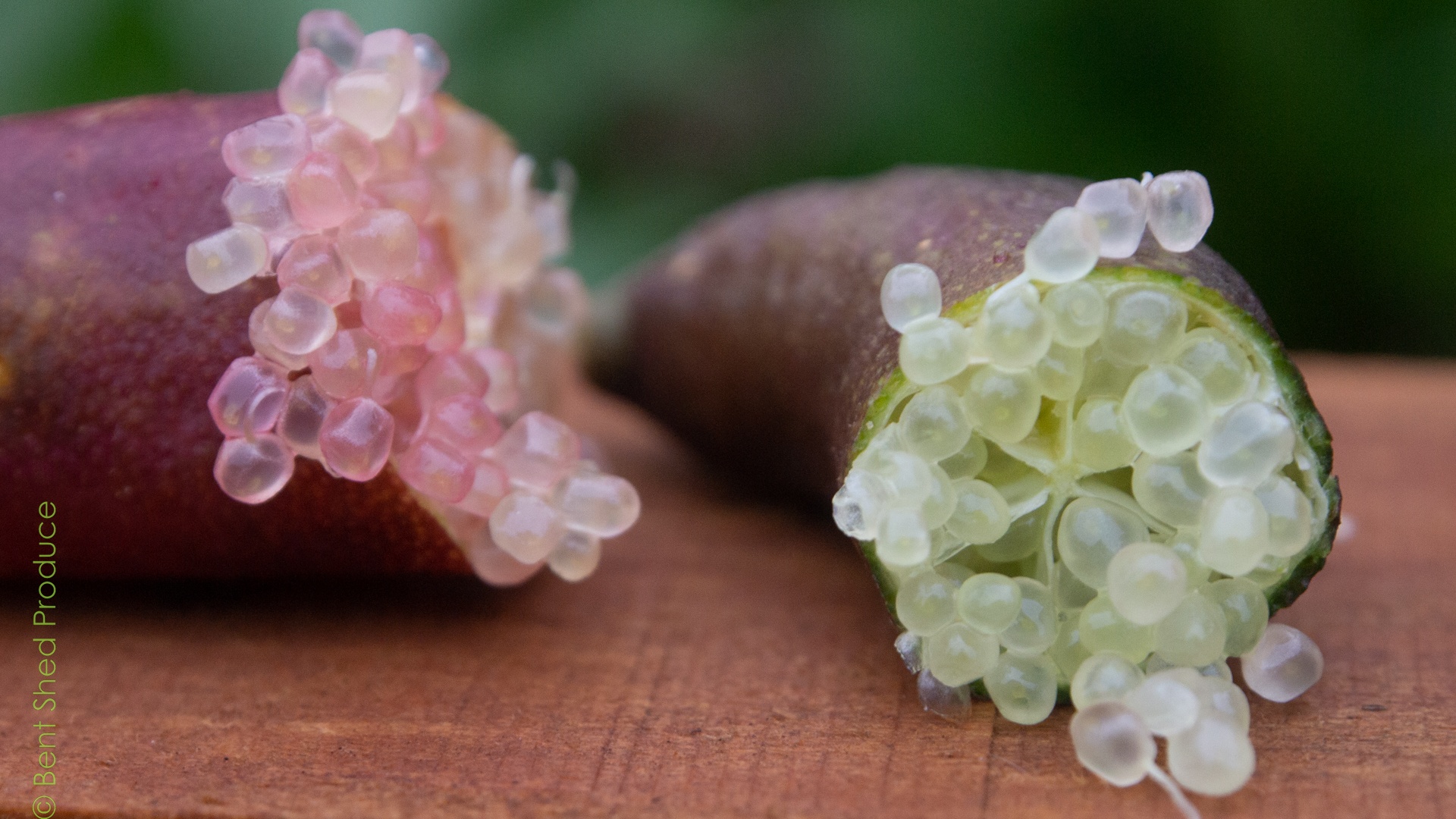Tangy little bubbles of flavour
Also Finger lime, sunrise lime (actually a CSIRO hybrid), lime caviar.
Latin name: Citrus australasica.
This is a true member of the Citrus family, along with lemons, limes, oranges, etc. In the wild, it naturally comes in a range of colours; these have been emphasised in domestication, and Finger Lime bubbles can now be found in a rainbow ranging from pale lemomadey green through to deep ruby red.
Eating

- A true lime, but the juice is contained in small, intensely-flavour “bubbles” of liquid. The fun comes in popping between the teeth for an intense burst of flavour.
- The bubbles are best used fresh, in both sweet and savoury dishes.
- Different-coloured limes do have subtle flavour differences. Some are more sour, some are sweeter. We’ve personally found that the pale green variety is sweeter than the pinky-red.
- Excellent squeezed on to seafood, especially oysters and any sashimi.
- Add to drinks and cocktails, especially gin and tonics, particular if it’s a local or native-flavoured gin.
- Top sweets, such as cheesecake, yoghurt, or fruit salads.
- Mix into salads, either sprinkled on top of the leaves or added to dressings and mayonnaises.
- Finish hot dishes just before serving, such as stir-fries or curries.
- The whole lime can be dried until completely hard and firm, and then used either whole or ground to add a rich, zingy, tangy flavour to a range of dishes.
Growing
This is a sub-tropical understory plant, naturally found along the coast of NSW and southern Qld.
It grows in colder regions with a certain care:
- Keep protected from frost, extreme winds, and direct summer sunlight for the first few years.
- Keep up the water.
- Use a native fertiliser.
- Tip-prune if you want it kept to a certain size or shape.
- It does well as a container plant, or planted directly against the side of the house – interestingly, not necessarily the north or western sides. Early morning sun is excellent.
- It can grow into quite a tall tree even in the Canberra region – we regularly harvest from one tree in Watson that’s almost larger than the house.
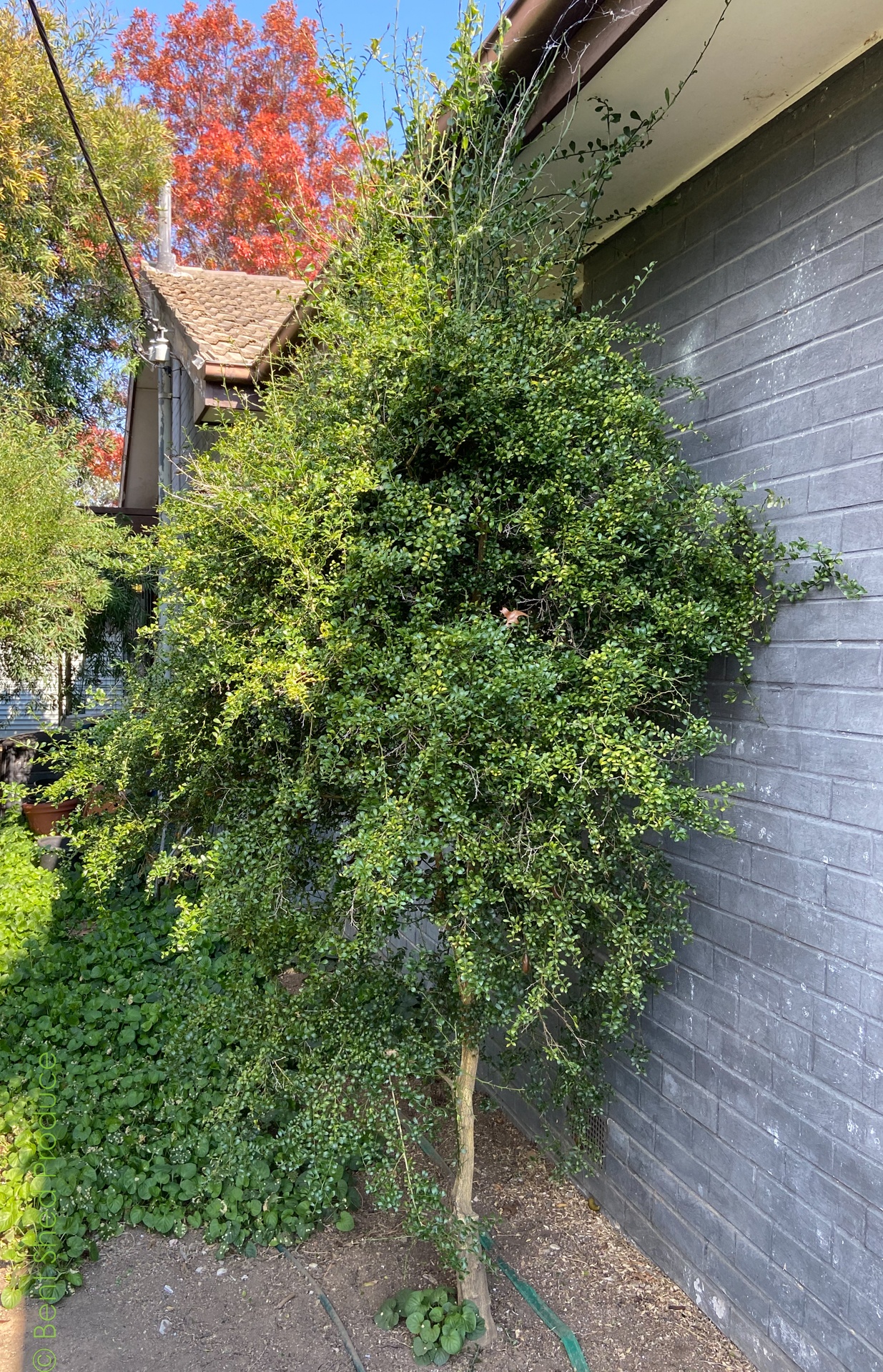
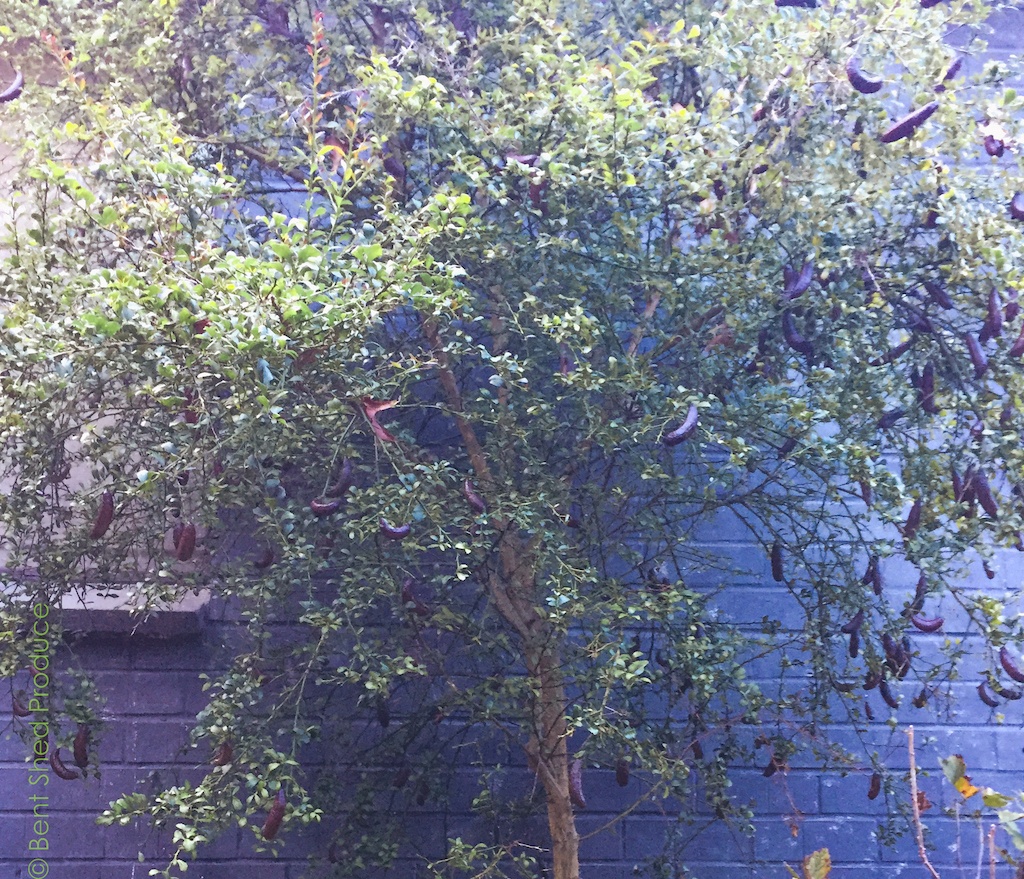
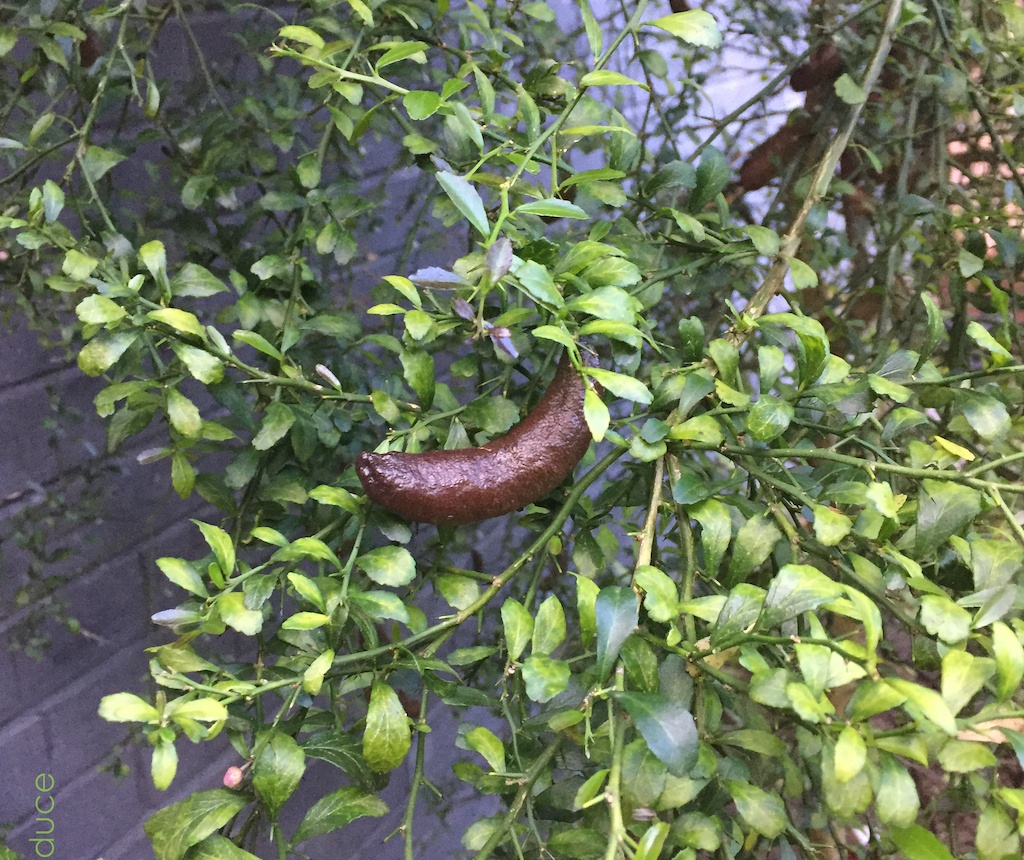
Harvesting and storage
- Harvest Finger Limes between November and June, depending on your location. The main season is around March of each year.
- Harvest when they are large, plump and heavy, with richly-coloured skin. Note, however, that the actual colour of the skin does not necessarily denote ripeness; green-skinned finger limes can be just as ripe and delicious as red-skinned ones (and are, in fact, a little sweeter and less acid than red-skinned ones).
- Finger limes will keep fresh in the fridge for several weeks.
- They also freeze extremely well. They will lose some condition on defrosting, but the “bubbles” should still be intact.
- You can also dry the whole fruit. When fully dried, the rich tangy, zesty, almost sherbert-like flavour works brilliantly in both sweet and savoury dishes.
- Dry over several months on well-aired trays or baskets, in a cool, dry, well-aired location. Check regularly for mould.
- They also dry in a dehydrator; it may take up to 24 hours or more to completely dry.
- Slice fruit for a quicker result.
